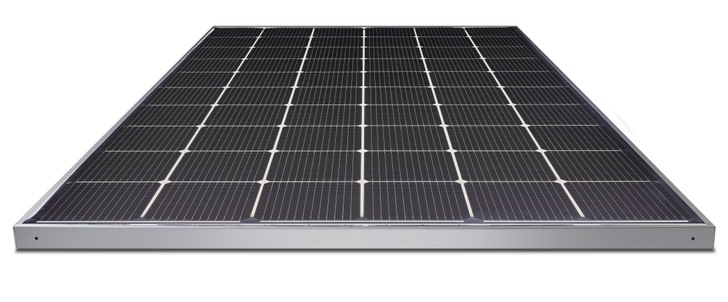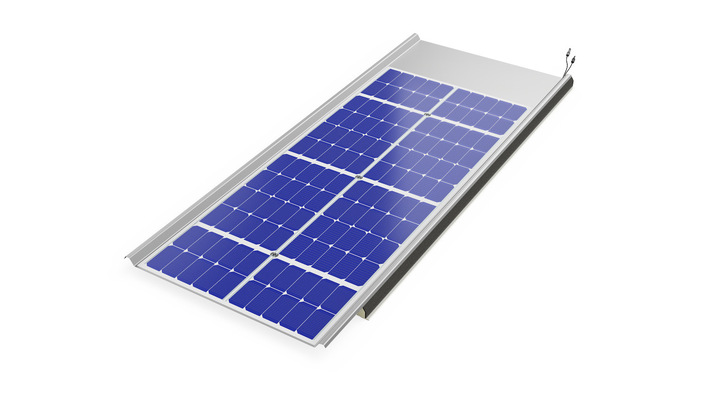Last year, LG had brought the new Solar Neon 2 on the market, and introduced their new Cello technique for solar cells. These particular cells make it possible to convert light from the front and back of a cell into solar power. First, LG introduced modules with black (300 watts with 60 cells) and white (320 watts with 60 cells) back sheets. Now the modules are also delivered with transparent sheets.
"Compared to the lightproof sheet, the yield is up to 25 percent higher," confirms Sales Manager Achmed Mohamed of LG Solar. "Whether the effect of bifacial cells can be fully utilized, of course, depends on the installation of the modules." The new LG Neon 2 bifacial has a silver frame, it is like all other LG modules mounted onto the lower frame.
The yield depends on the type of installation
Solar panels installed on dark roofs are unlikely to benefit from the Albedo effect due to the low reflectance of the back. Not so with solar modules that are elevated, for example on bright industrial roofs or the open land with layers of white pebbles. You can now draw up to 375 watts from the modules.
LG will offer those modules at the same price as the black ones. "We share the benefits for the electricity production costs directly with our customers," says Mohamed. "The bifacial bonus is available to customers virtually free of charge."
Efficiency of module increased to 22.9 percent
This way, the efficiency of monocrystalline modules increases to 22.9 percent, a decent jump. LG does not offer a polycrystalline version at this time. The new module is already available in Europe, first installations were set up. The tests in Korea promise the same quality as the well known Neon modules by LG. The same product warranty of twelve years and the performance guarantee for 25 years will be fully granted for the transparent bifacial module.
LG has increased their revenues significantly in the past year. Its sales in Europe in the first quarter of 2016 went very well. Due to the high global demand for Neon 2 modules and Cello technology, all production lines in the factory in Gumi have been adjusted to the new technology. The company is investing around 435 million US dollars in new cell lines. By the end of 2017, the module production will grow from currently 1 GW to 1.7 GW. By 2020 there will be 3 GW. (HS/IR)







